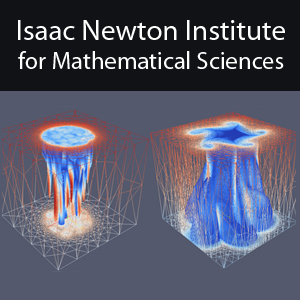ICON-IAP: A non-hydrostatic global model designed for energetic consistency
25 mins 29 secs,
106.12 MB,
Flash Video
484x272,
29.97 fps,
44100 Hz,
568.58 kbits/sec
Share this media item:
Embed this media item:
Embed this media item:
About this item

| Description: |
Almut Gassmann, (Leibniz-Institut für Atmosphärenphysik, Kühlungsborn)
Thursday 27 September 2012, 14:50-15:15 |
|---|
| Created: | 2012-10-02 12:33 |
|---|---|
| Collection: | Multiscale Numerics for the Atmosphere and Ocean |
| Publisher: | Isaac Newton Institute |
| Copyright: | Almut Gassmann |
| Language: | eng (English) |
| Abstract: | The talk describes a new global non-hydrostatic dynamical core (ICON-IAP: Icosahedral Nonhydrostatic model at the Institute for Atmospheric Physics) on a hexagonal C-grid which is designed to conserve mass and energy. Energy conservation is achieved by discretising the antisymmetric Poisson bracket which mimics correct energy conversions between the different kinds of energy (kinetic, potential, internal). Because of the bracket structure this is even possible in a complicated numerical environment with (i) the occurrence of terrain-following coordinates with all the metric terms in it, (ii) the horizontal C-grid staggering on the Voronoi-mesh and the complications induced by the need for an acceptable stationary geostrophic mode, and (iii) the necessity for avoiding the Hollingsworth-instability. The model is equipped with a Smagorinsky-type nonlinear horizontal diffusion. The associated dissipative heating is accounted for by the application of the discrete product rule for derivatives. The time integration scheme is explicit in the horizontal and implicit in the vertical. In order to ensure energy conservation, the Exner pressure has to be off-centered in the vertical velocity equation and extrapolated in the horizontal velocity equation.
Test simulations are performed for small scale and global scale flows. A test simulation of linear nonhydrostatic flow over a rough mountain range shows the theoretically expected gravity wave propagation. The baroclinic wave test is extended to 40 days in order to check the Lorenz energy cycle. The model exhibits excellent energy conservation properties even in this strongly nonlinear and dissipative case. The Held-Suarez test confirms the reliability of the model over even longer timescales. |
|---|---|
Available Formats
| Format | Quality | Bitrate | Size | |||
|---|---|---|---|---|---|---|
| MPEG-4 Video | 640x360 | 1.84 Mbits/sec | 353.45 MB | View | Download | |
| WebM | 640x360 | 1.24 Mbits/sec | 237.47 MB | View | Download | |
| Flash Video * | 484x272 | 568.58 kbits/sec | 106.12 MB | View | Download | |
| iPod Video | 480x270 | 505.9 kbits/sec | 94.49 MB | View | Download | |
| MP3 | 44100 Hz | 125.01 kbits/sec | 23.21 MB | Listen | Download | |
| Auto | (Allows browser to choose a format it supports) | |||||

